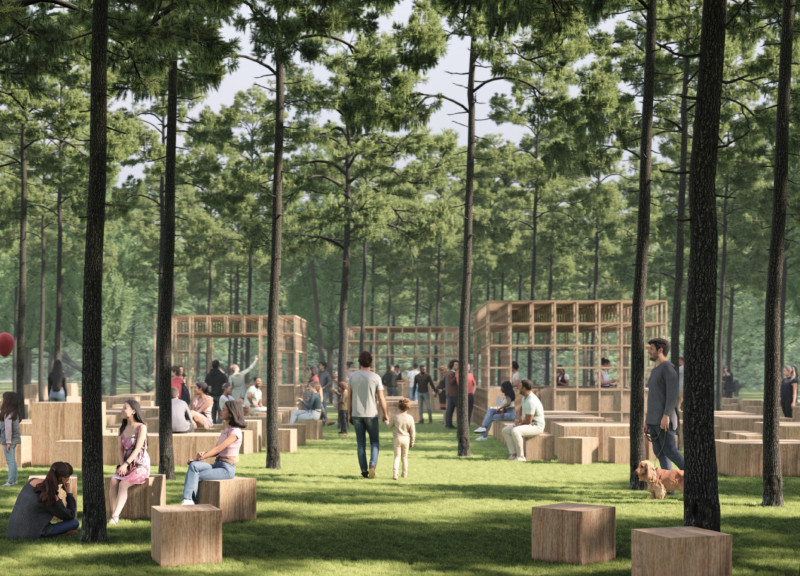5 key facts about this project
The Forest Food Court design project introduces a new space that integrates with the forest environment while providing a place for eating and socializing. The design concept focuses on creating an interactive dining area that reflects the beauty of the natural landscape. It prioritizes sustainability and user experience, employing a modular approach that caters to different needs and site conditions.
Modular Design
The design employs a simple and efficient modular framework. Each component can be quickly put together on-site, allowing for flexibility and ease of assembly. Timber is the primary material used, reflecting a commitment to sustainability and ecological awareness. This choice supports a lightweight structure that minimizes the impact on the surrounding environment during construction.
Zoning and Spatial Organization
The layout of the food court features distinct zones that encourage exploration and interaction among visitors. These areas are tailored to foster social engagement and create diverse settings for gathering. The seating arrangements are adaptable, designed to host various events and easily configurable to meet the needs of the community. This ensures that the food court serves as an accessible space for all.
Integration with Nature
The design carefully integrates the seating areas with the natural landscape. The placement promotes a connection between dining and nature, allowing visitors to enjoy their meals while being surrounded by greenery. The transition from built structures to natural elements is smooth, making it easier for guests to appreciate the beauty of the forest.
User Experience and Community Engagement
The project emphasizes the importance of community interactions while maintaining respect for the landscape's integrity. The arrangement of spaces is planned to encourage social connections without overwhelming individuals. This design creates an inviting atmosphere, allowing people to enjoy both their meals and the natural environment.
Above the dining areas, a layered canopy provides shelter and filters light, creating a warm and pleasant ambiance. This feature enhances the experience of eating in nature, offering both protection and a connection to the elements.






















































